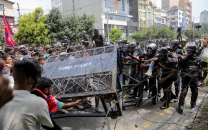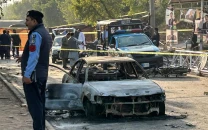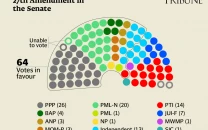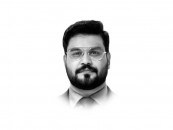The new Nazis
Bolstered by an economic meltdown and fears of a cultural invasion,the radical right is on the march across Europe.

Bolstered by an economic meltdown and fears of a cultural invasion, the radical right is on the march across Europe.
Golden Dawn, with its anti-immigrant and rabidly nationalist agenda has been linked to attacks on immigrants across Greece but this seems to have only increased its appeal among a fed-up populace whose fortunes seem to be steadily declining. In the 2012 elections, the Golden Dawn received 7% of the popular vote, allowing it to enter parliament with 21 seats. As long as economic turmoil continues to engulf Greece, its support base is set to strengthen. In this phenomenon, Greece is by no means unique. From Italy’s Northern League to France’s National Front, the European right is very much on the rise. But while Xenophobia may be a Greek word, and Italy the birthplace of modern fascism, it is Germany that lays claim to the poisonous legacy of Nazism. In an ironic turn of events, it now seems that Golden Dawn’s members are setting up cells in German cities to recruit Greek immigrants to their cause. But while the rest of Europe lurches to the right, what is the situation in Germany itself?

“He is immortal who lives through his children and his children’s children. Do you want to be an immortal?” The question stands out in bold white letters set against a black background. This is the website of the Immortals, a neo-Nazi group in Germany which has built up a formidable reputation by organizing flash mobs in German cities, largely by tapping the mobilizing power of social media.
In May 2011, one such impromptu march in the eastern German town of Bautzen was captured on video. The footage shows several hundred people walking down the street wearing black cloaks, their faces covered with identical white masks. They waved fiery torches above their heads — quite like the members of the Ku Klux Klan (KKK) whose pointed headgear and white cloaks and sent shivers down the spines of the ‘coloreds’ in the USA in the 1960s.
Recently, German authorities launched an investigation into an accusation that two police officers in Munich had recently become members of the German branch of the KKK. To add to the scandal, these officers were also a part of an investigation into a series of murders committed by the so-called ‘Zwickau cell’ of the National Socialist Underground — a right-wing terror group from eastern Germany that was busted in late 2011, after two of its members were found dead in an apparent suicide pact.

The group, headed by Beate Zschaepe, had been active since 2001, and was responsible for the killings of nine immigrants as well as several bank robberies. For investigators and observers, a link between the rise of neo-Nazism and regions of the erstwhile German Democratic Republic (GDR) seems to be slowly emerging.
The relative economic disadvantages experienced by several regions that were formerly part of East Germany also seem to be fueling the right-wing scene. Ideological totalitarianism during the communist regime in the GDR seems to have also contributed to the identity crisis of the youth in these areas, a factor which has been extensively addressed by neo-Nazi ‘dropout’ Ingo Hasselbach in his book, Fuhrer-Ex: Memoirs of a Former neo-Nazi. Several youth in these areas have had parents who were complete believers in the communist system until the Berlin Wall fell in 1989, leading to confusion and a deep loss of faith. Consequently, there were those who sought refuge in ‘ethnic’ pride and hailed this characteristic as the primary form of identification with the German nation.
The skinhead movement existed in both the GDR and West Germany even before the reunification of Germany. However, as Andreas Hieronymus from the Institute for Migration and Racism Research (IMiR) in Hamburg says: “After reunification and the breakdown of the government in the East, western Nazis could contact existing structures in the East and they used it as a recruiting field… In the east the communist ideology had broken down and nationalism was reinforced, but how German nationalism could be articulated without referring to the fascist time was not clear.”
Fading into the crowd
Neo-Nazi groups in Germany, like the Immortals and Autonomous Nationalists, have a lively sub-culture, complete with its own music and mode of dressing. Several groups make an effort to blend into the population, enjoying Turkish food and avoiding the typical skinhead look. They are also active on the internet, especially Twitter, where they communicate with fellow group members and organize instant mobs.
But how much traction do the right-wing extremists actually find in Germany? Is there a link between economic downturn and the rise in right-wing extremism as in the case of Greece and Golden Dawn?
Prof. Wilhelm Heitmeyer, an expert on right-wing extremism contends that right-wing extremism as an organised political movement does not stand a chance despite high levels of unemployment in the Ruhr area in Germany. “These are groups which do not operate as political parties. Instead they, like the Autonomous Nationalists, are instead known for their violent tactics and also for their links to the murderous National-Socialist Underground,” he says.

Heitmeyer claims that the prospect of right-wing parties becoming more popular is far lower in Germany than in Poland or Hungary where extreme right political parties could win at the national level, even though they may not use violence the way the ‘genuine’ right-wing extremists do. This could in fact be a bigger problem for democracy.
Tough questions
In Germany, right-wing groups pose a threat to the weaker sections of the population, such as migrants. A recent study by the Friedrich Ebert Foundation, a German think tank, confirms this. The authors claim that the perceived hate against foreigners is a strong motivation for prospective members to join right-wing groups. Islamophobia, too, is closely linked with the anti-immigrant sentiments that prevail and the general fear of the ‘other’ that seems to fuel anti-Muslim feelings as well. The same study claims that right-wing views have gained more support in Germany in recent years. In 2010, right-wing extremist views were believed to be present among 8.2 per cent of the population; today the figure has risen to 9 per cent.
In a paper called, Is Europe on the ‘right’ path, Britta Schellenberg, an expert on right-wing extremism in Germany, believes that neo-Nazi groups try to win support using migrant issues, especially at the local level. However, none of the right- wing groups have ever been able to establish themselves nationally because of strict German laws governing the constitutional validity of such organizations. Organisations such as the Antifaschisten (anti-fascists) are also militantly active in the anti-right wing scene in Germany. They have also organized counter-marches to protest Neo-Nazi demonstrations.
A strong democracy and a vibrant anti-fascist movement have proven a bulwark against what are fundamental changes in Germany’s demographics, but there is still a long way to go before the pereption of what it means to be ‘German’ changes.
Hieronymus believes that this “reinvention” is happening, but it will take a long time: “Our citizenship law was changed just about 12 to 13 years ago and until then you had this definition of a pure German being an ethnic German, but now you can be a German if you are an ethnic or a migrant, naturalized German. Slowly, the images of a black German or a Muslim German begin to emerge. But still, when people think of a German, they think of a blond, blue-eyed person.”
Germany’s public sphere today is dealing with the debate on the basic identity of its country — with ‘who is a German?’ being the most important question. And it is at this junction where right-wing extremism clashes with the integration of foreigners into what is essentially a western democratic culture with Catholic roots and a strong sense of identity.
Published in The Express Tribune, Sunday Magazine, March 10th, 2013.
Like Express Tribune Magazine on Facebook to stay informed and join the conversation.



















COMMENTS
Comments are moderated and generally will be posted if they are on-topic and not abusive.
For more information, please see our Comments FAQ